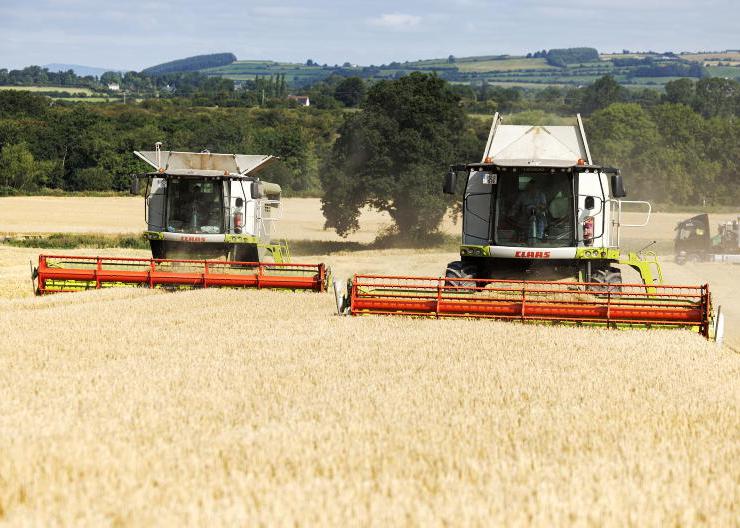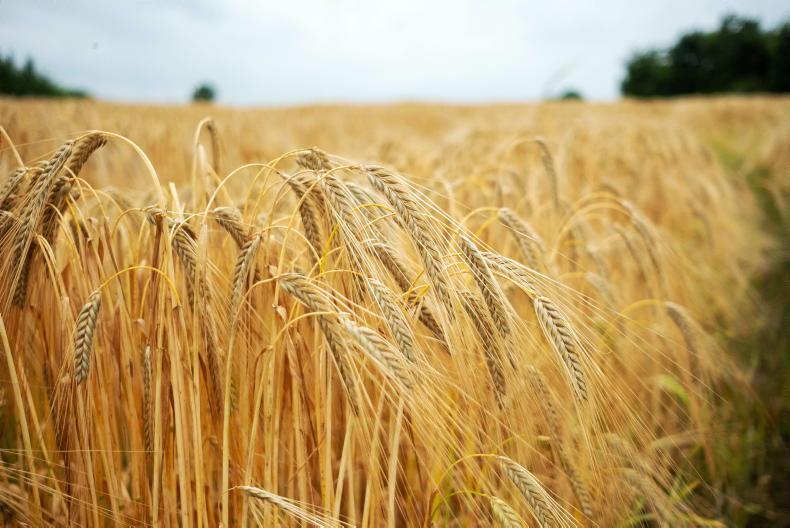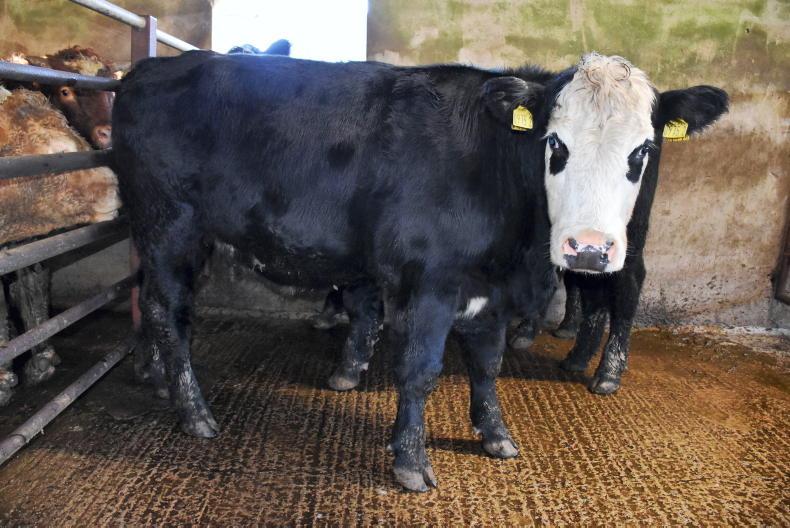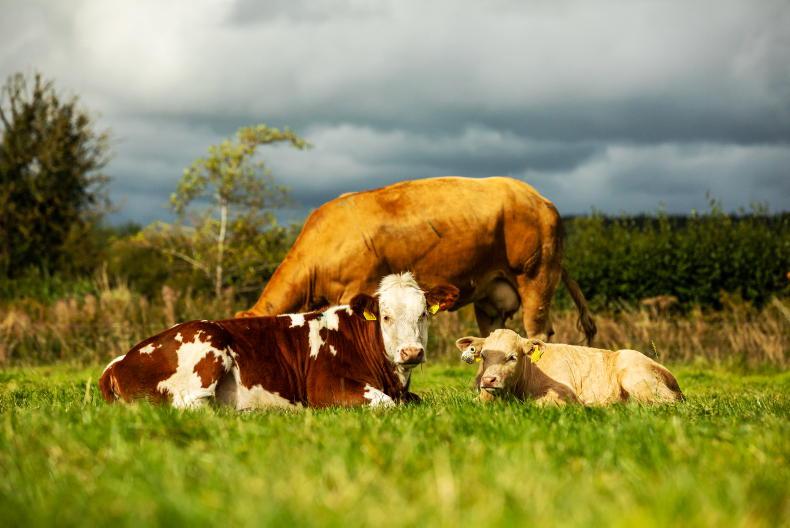This week we revisit growers from Wexford, Laois and Galway. Ground work is still ongoing in Galway and Laois, as growers take advantage of the good weather to spread lime and cut hedges. Rain has returned to all areas to some degree but ground is drying out relatively quickly again. All growers are happy with the progress of their winter crops, Stephen Robb reports.

Ballycarney,
Co Wexford
Two weeks ago marked the first really wet week in Ballycarney, which brought any ongoing field work in the area to a stop. Water could be seen laying in fields which were freshly sown and rolled after.
However, better weather returned at the weekend once again. Temperatures were very mild for the time of year, but now have turned cooler.
Julian is happy with the progress of all his winter crops. He got a strong kill of grassweeds with the post-emergence herbicide, which was applied to his winter barley a number of weeks ago. He doesn’t expect that the crop will get too far ahead coming into winter, saying “it was sown around the normal time into the heavy ground. I would imagine that ground will get cold quickly and slow down growth.”
Pest pressure is low but he plans to apply an autumn aphicide at the end of November if ground conditions permit. He’ll change the types on the sprayer from row crops to 600x65x38 to prevent rutting. Crow pressure on the crop has eased from last month.
His husky winter oats are looking lush but Julian isn’t fearful that they will become too advanced for the winter period.
Pigeon pressure
His fodder rape and leafy turnip cover crops are moving along well, helped by the rain and mild temperatures.
There is a high amount of pigeons grazing the crop however. Julian is aiming to try and graze the crop with his stock in December if ground conditions are good enough. He may have to erect temporary electric fencing on a number of those fields.
While grass growth is good, he brought the remainder of his stock indoors last week. “The feeding value of grass at this time of year is questionable. They were a bit uneasy in the field, so we brought them indoors,” Julian explains.
Regrowth this year on stubble ground is very strong, explains Julian, and he will have to burn off stubble ground before ploughing for spring crops.
“We’ll make the sprayer winter ready by draining the lines, tank, and pump and running antifreeze through it soon.”

Portlaoise,
Co Laois
Well over 65mm of rain fell on Eugene’s farm over the past few weeks and it has been notably windier. Temperatures are also beginning to turn cooler this week. Crops continue to develop well.
Ground conditions are still very good for the time of year and his store cattle remain outdoors. “Almost 24 hours after rainfall, ground conditions would be good enough to travel again,” he explains.
The gate is closed on his winter barley for the year and the crop has developed very well. Emergence of the triticale, which he sowed a number of weeks ago, is high but crows were a particular problem in that crop.

Eugene Ryan's vetch and phacelia cover crops have recovered after a slow start. These two pictures of the cover crop were taken one month apart from each other.
Winter wheat decisions
He finished sowing Bennington winter wheat on 25 October. Conditions at the time of planting were excellent. He sowed the crop at 165kg/ha with a TGW of 44g and he factored in an establishment rate of 75% to 80%. The seed wasn’t treated with Redigo Deter. “Emergence has been slower than I expected, soil temperates are two degrees lower now than this time last year” he says.
He is aiming to spray the crop this week with an early post-emergence herbicide as the tramlines are just about visible. He will make the call soon whether or not to apply an aphicide, depending on the outlook of the weather. The crop was min-tilled this year. “Min-tilling the crop has been a steep learning curve for me,” he says. The crop followed spring rape, and Eugene prefers to leave the volunteer seeds on the surface for as long as possible, in order to allow as much of the seed to germinate.
The mild weather has really suited his leafy turnip and forage rape cover crops, which now stand at knee height. He intends to graze the crop at some stage if ground conditions permit. His phacelia and vetch cover crops have also developed very well over the course of the month. Crop establishment and vigour was poor when we visited Eugene last month. “I’m a lot happier with the crop now than I was last month,” he explains. “Were currently doing a small repair to the roller on the head of the hedge cutter. It’s not a major job, but it has to be done.”

Ballinasloe,
Co Galway
It has been an exceptional back end to the year in Ballinasloe, explains John. Like most the rest of the country, a high amount of rain fell two weeks ago, but ground was trafficable again within a matter of days.
Daytime temperatures of 12-14°C have ensured crops continue to develop. Temperatures have dipped, however, over the weekend. His Cassia, Tower, Bazooka and Cosmos winter barley are all looking exceptional as a result of the good autumn weather.
Crops may be a little too advanced, however, as they head into the tougher winter months: “The crop is still growing and there might just be a bit too much foliage heading into the winter.”
The crop received a herbicide application on 4 November along with an aphicide. However, the mild temperatures have raised the question – do growers need to apply a second aphicide? John expects that cooler temperatures should eliminate the need for one.
Slug pressure is low and the worst of the crow damage has passed.
His leafy turnip and fodder rape crops continue to bulk and are currently below knee height. “I’ve never seen them as good, considering that they were sown after spring crops,” he says. The crop will be grazed over the winter by John’s sheep. There are still good covers in some fields and there has been a lot of silage made in the area so there isn’t significant pressure on fodder demand.
Busy spreading lime
John is busy spreading lime on grassland, with a lot of opportune spreading by farmers taking place on account of the good ground conditions. This is the time of year also for machinery servicing, with John saying “we aim to service all of the grass machinery before Christmas”.
He is currently servicing his two McHale balers and intends to move to his triple mowers next.
He’s after replacing a full set of pickup tines, a full set of cam bearings, chains on the pickup reels, knives and few other parts on one baler. The balers make around 18,000 silage bales between them over the season.
“We’ll keep spreading lime as long as ground conditions remain good. We once spread lime on Christmas Eve to finish a job.”
Read more
€1,000 buy-in for beet factory co-op
Fodder scheme payments to commence by year end
This week we revisit growers from Wexford, Laois and Galway. Ground work is still ongoing in Galway and Laois, as growers take advantage of the good weather to spread lime and cut hedges. Rain has returned to all areas to some degree but ground is drying out relatively quickly again. All growers are happy with the progress of their winter crops, Stephen Robb reports.

Ballycarney,
Co Wexford
Two weeks ago marked the first really wet week in Ballycarney, which brought any ongoing field work in the area to a stop. Water could be seen laying in fields which were freshly sown and rolled after.
However, better weather returned at the weekend once again. Temperatures were very mild for the time of year, but now have turned cooler.
Julian is happy with the progress of all his winter crops. He got a strong kill of grassweeds with the post-emergence herbicide, which was applied to his winter barley a number of weeks ago. He doesn’t expect that the crop will get too far ahead coming into winter, saying “it was sown around the normal time into the heavy ground. I would imagine that ground will get cold quickly and slow down growth.”
Pest pressure is low but he plans to apply an autumn aphicide at the end of November if ground conditions permit. He’ll change the types on the sprayer from row crops to 600x65x38 to prevent rutting. Crow pressure on the crop has eased from last month.
His husky winter oats are looking lush but Julian isn’t fearful that they will become too advanced for the winter period.
Pigeon pressure
His fodder rape and leafy turnip cover crops are moving along well, helped by the rain and mild temperatures.
There is a high amount of pigeons grazing the crop however. Julian is aiming to try and graze the crop with his stock in December if ground conditions are good enough. He may have to erect temporary electric fencing on a number of those fields.
While grass growth is good, he brought the remainder of his stock indoors last week. “The feeding value of grass at this time of year is questionable. They were a bit uneasy in the field, so we brought them indoors,” Julian explains.
Regrowth this year on stubble ground is very strong, explains Julian, and he will have to burn off stubble ground before ploughing for spring crops.
“We’ll make the sprayer winter ready by draining the lines, tank, and pump and running antifreeze through it soon.”

Portlaoise,
Co Laois
Well over 65mm of rain fell on Eugene’s farm over the past few weeks and it has been notably windier. Temperatures are also beginning to turn cooler this week. Crops continue to develop well.
Ground conditions are still very good for the time of year and his store cattle remain outdoors. “Almost 24 hours after rainfall, ground conditions would be good enough to travel again,” he explains.
The gate is closed on his winter barley for the year and the crop has developed very well. Emergence of the triticale, which he sowed a number of weeks ago, is high but crows were a particular problem in that crop.

Eugene Ryan's vetch and phacelia cover crops have recovered after a slow start. These two pictures of the cover crop were taken one month apart from each other.
Winter wheat decisions
He finished sowing Bennington winter wheat on 25 October. Conditions at the time of planting were excellent. He sowed the crop at 165kg/ha with a TGW of 44g and he factored in an establishment rate of 75% to 80%. The seed wasn’t treated with Redigo Deter. “Emergence has been slower than I expected, soil temperates are two degrees lower now than this time last year” he says.
He is aiming to spray the crop this week with an early post-emergence herbicide as the tramlines are just about visible. He will make the call soon whether or not to apply an aphicide, depending on the outlook of the weather. The crop was min-tilled this year. “Min-tilling the crop has been a steep learning curve for me,” he says. The crop followed spring rape, and Eugene prefers to leave the volunteer seeds on the surface for as long as possible, in order to allow as much of the seed to germinate.
The mild weather has really suited his leafy turnip and forage rape cover crops, which now stand at knee height. He intends to graze the crop at some stage if ground conditions permit. His phacelia and vetch cover crops have also developed very well over the course of the month. Crop establishment and vigour was poor when we visited Eugene last month. “I’m a lot happier with the crop now than I was last month,” he explains. “Were currently doing a small repair to the roller on the head of the hedge cutter. It’s not a major job, but it has to be done.”

Ballinasloe,
Co Galway
It has been an exceptional back end to the year in Ballinasloe, explains John. Like most the rest of the country, a high amount of rain fell two weeks ago, but ground was trafficable again within a matter of days.
Daytime temperatures of 12-14°C have ensured crops continue to develop. Temperatures have dipped, however, over the weekend. His Cassia, Tower, Bazooka and Cosmos winter barley are all looking exceptional as a result of the good autumn weather.
Crops may be a little too advanced, however, as they head into the tougher winter months: “The crop is still growing and there might just be a bit too much foliage heading into the winter.”
The crop received a herbicide application on 4 November along with an aphicide. However, the mild temperatures have raised the question – do growers need to apply a second aphicide? John expects that cooler temperatures should eliminate the need for one.
Slug pressure is low and the worst of the crow damage has passed.
His leafy turnip and fodder rape crops continue to bulk and are currently below knee height. “I’ve never seen them as good, considering that they were sown after spring crops,” he says. The crop will be grazed over the winter by John’s sheep. There are still good covers in some fields and there has been a lot of silage made in the area so there isn’t significant pressure on fodder demand.
Busy spreading lime
John is busy spreading lime on grassland, with a lot of opportune spreading by farmers taking place on account of the good ground conditions. This is the time of year also for machinery servicing, with John saying “we aim to service all of the grass machinery before Christmas”.
He is currently servicing his two McHale balers and intends to move to his triple mowers next.
He’s after replacing a full set of pickup tines, a full set of cam bearings, chains on the pickup reels, knives and few other parts on one baler. The balers make around 18,000 silage bales between them over the season.
“We’ll keep spreading lime as long as ground conditions remain good. We once spread lime on Christmas Eve to finish a job.”
Read more
€1,000 buy-in for beet factory co-op
Fodder scheme payments to commence by year end














SHARING OPTIONS